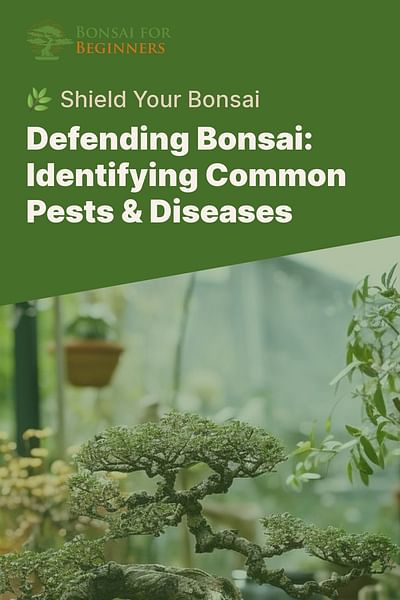Hiroshi Nakamura is a third-generation bonsai master from Kyoto, Japan. He has over 40 years of experience in the art of bonsai and has been sharing his knowledge with beginners around the world. Hiroshi is known for his unique approach to teaching, which combines traditional techniques with modern science.
As a bonsai enthusiast, it's important to be aware of the common pests and diseases that can affect your bonsai trees. While bonsai trees are generally hardy and resilient, they can still fall victim to various issues. In this guide, I will walk you through some of the most common pests and diseases that can affect bonsai trees, as well as provide tips on prevention and treatment.
One of the most common pests that bonsai trees can encounter is aphids. These tiny insects feed on the sap of the leaves and stems, causing them to wilt and distort. If you notice sticky residue on your bonsai or see ants crawling around, it may be a sign of an aphid infestation. To combat aphids, you can use a gentle insecticidal soap or a mixture of water and dish soap to spray the affected areas. Additionally, introducing natural predators like ladybugs can help control aphid populations.
Another pest that can wreak havoc on your bonsai trees is the spider mite. These minuscule pests are known for their ability to spin fine webs and suck the sap from the leaves, leading to yellowing and browning. To prevent spider mites, regularly mist your bonsai trees to increase humidity and inspect the undersides of the leaves for any signs of infestation. If you do find spider mites, you can use a miticide or a mixture of water and neem oil to treat the affected areas.
Fungal diseases are also a common issue in bonsai trees. One such disease is powdery mildew, which appears as a white, powdery substance on the leaves and stems. To prevent powdery mildew, ensure proper air circulation around your bonsai and avoid overwatering. If your bonsai does develop powdery mildew, you can use a fungicide specifically formulated for powdery mildew treatment.
Root rot is another fungal disease that can affect bonsai trees, especially if they are overwatered or have poor drainage. Signs of root rot include yellowing leaves, wilting, and a foul odor. To prevent root rot, make sure your bonsai is planted in well-draining soil and avoid overwatering. If you suspect root rot, carefully remove the affected roots and repot your bonsai in fresh, well-draining soil.
In addition to pests and diseases, bonsai trees can also face environmental challenges. During the winter months, cold temperatures and dry air can stress your bonsai. To protect your bonsai during winter, consider moving it to a sheltered location or using a protective cover. Additionally, reduce watering frequency and avoid fertilizing during this time.
Remember, prevention is key when it comes to maintaining the health of your bonsai trees. Regularly inspect your bonsai for any signs of pests or diseases, and take action promptly if you notice any issues. By providing proper care and attention, you can ensure that your bonsai trees thrive and bring you joy for years to come.
If you have any further questions or need more information on bonsai tree care, feel free to explore our website, Bonsai for Beginners. We have a wealth of resources and guides to help you become a bonsai expert. Happy bonsai growing!















